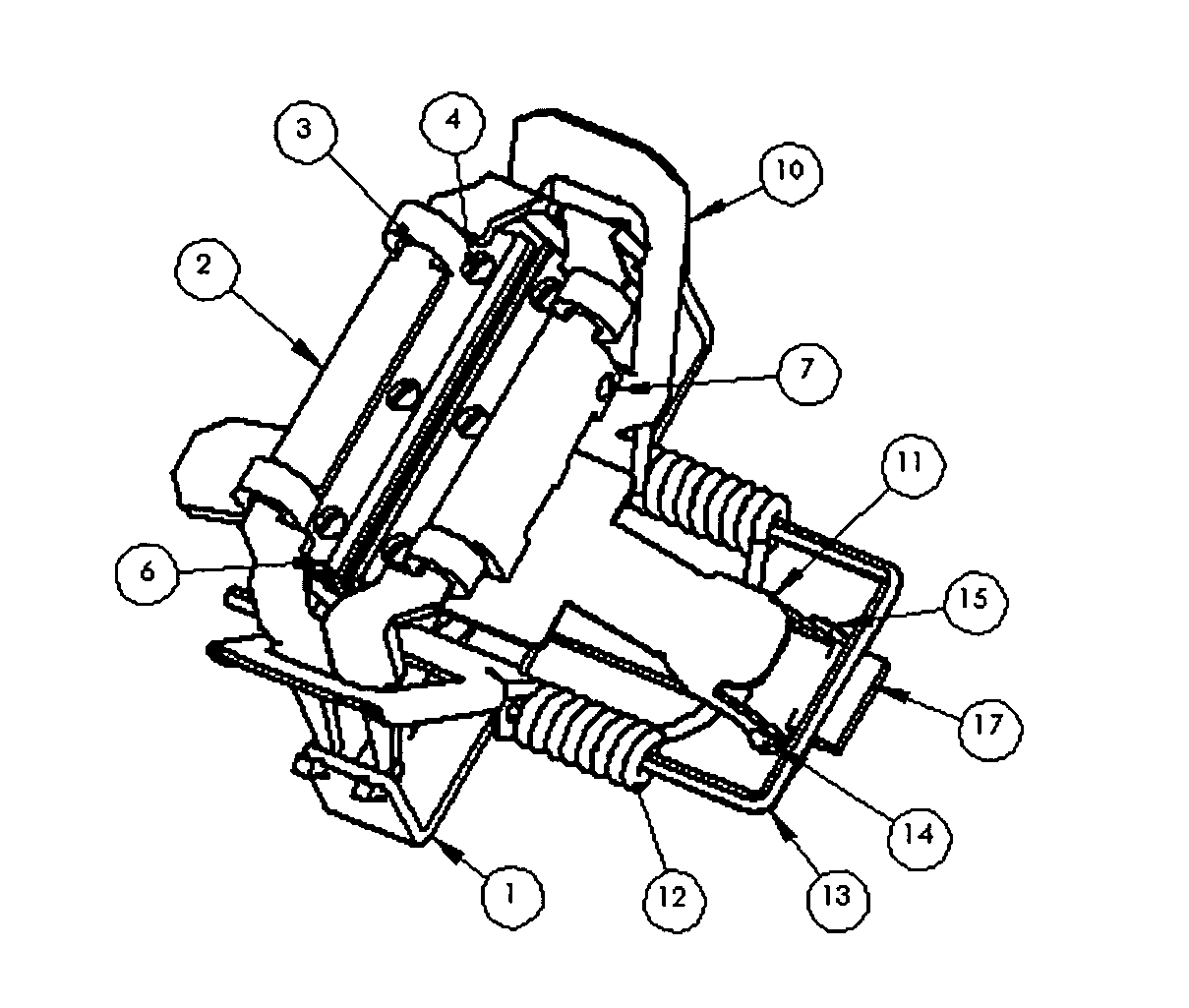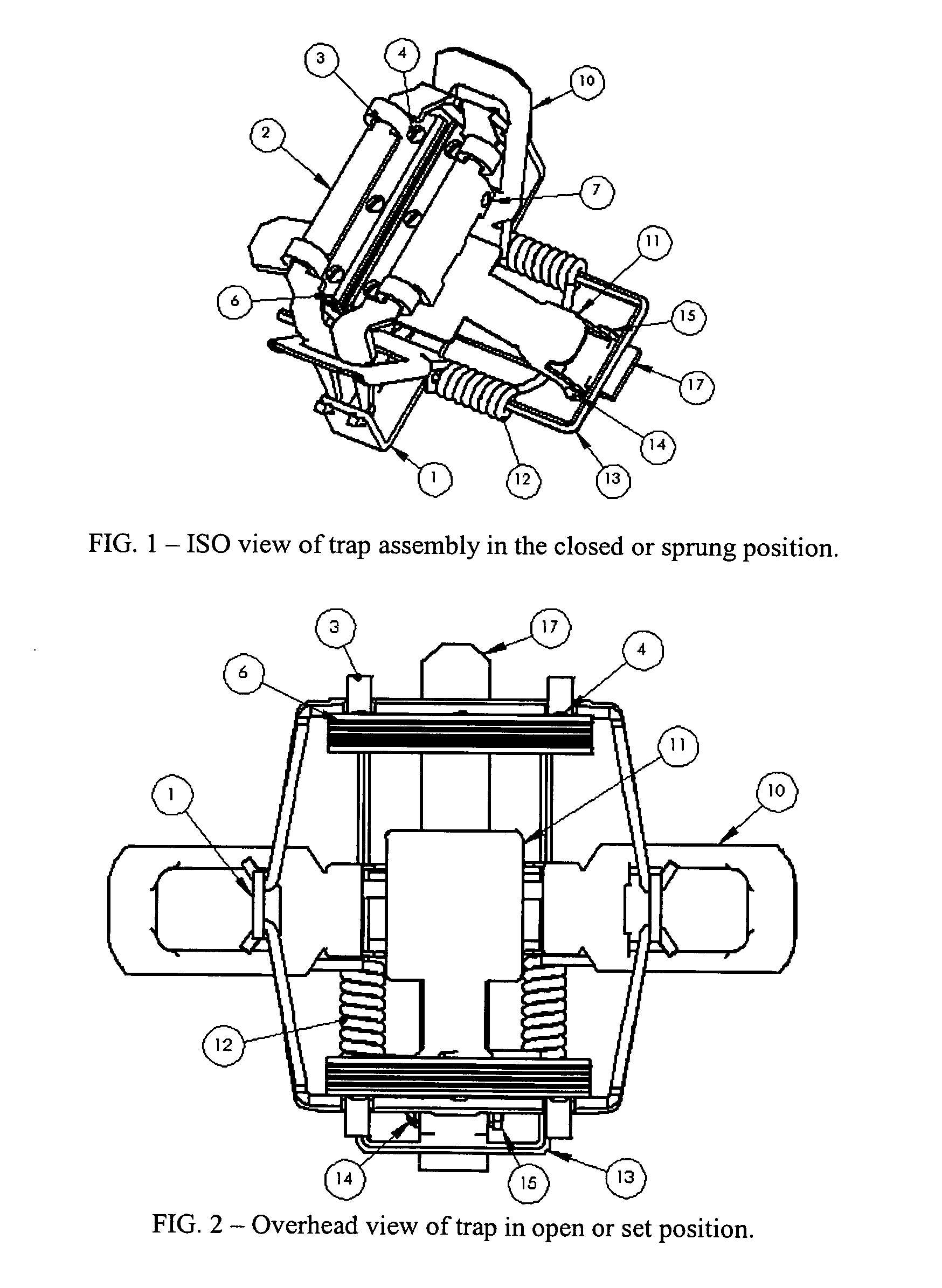Soft impact, rotating jaw animal trap
a technology of rotating jaw and animal trap, which is applied in the field of soft impact and rotating jaw animal trap, can solve the problems of not being able to address two specific problems, not being able to solve the problem of long-term operation of capturing and holding animals, and not being able to solve the problem of reducing the likelihood of impact damage to the animal, reducing the likelihood of circulation, and increasing the holding power
- Summary
- Abstract
- Description
- Claims
- Application Information
AI Technical Summary
Benefits of technology
Problems solved by technology
Method used
Image
Examples
Embodiment Construction
[0020] The majority of the components in this invention are to be formed using traditional heavy sheet metal construction techniques. Laser cutting, water jet cutting, electro-discharge machining, stamping, forming and machining are alternative processes that may be used. With respect to specific parts, the trap frame (1) as shown in FIG. 10 is formed typically through a stamping process to produce the flat shape, followed by drilling and slitting for notches to allow for installation of the spring retainer (13) and bending of the comers to form the finished part.
[0021] The substantially U-shaped main jaws are shown in detail in their preferred embodiment in FIG. 3. Two of these main jaws must be created for every trap assembly. The flat pattern is cut or stamped from a sheet of preferably steel, followed by bending processes to finish the part. Notches near the comers of the main jaw on the topmost corners will serve as rotation points for the auxiliary jaw subassembly. This rotat...
PUM
 Login to View More
Login to View More Abstract
Description
Claims
Application Information
 Login to View More
Login to View More - R&D
- Intellectual Property
- Life Sciences
- Materials
- Tech Scout
- Unparalleled Data Quality
- Higher Quality Content
- 60% Fewer Hallucinations
Browse by: Latest US Patents, China's latest patents, Technical Efficacy Thesaurus, Application Domain, Technology Topic, Popular Technical Reports.
© 2025 PatSnap. All rights reserved.Legal|Privacy policy|Modern Slavery Act Transparency Statement|Sitemap|About US| Contact US: help@patsnap.com



